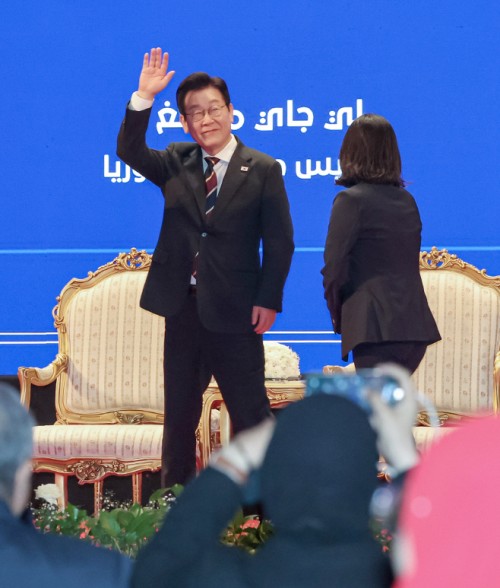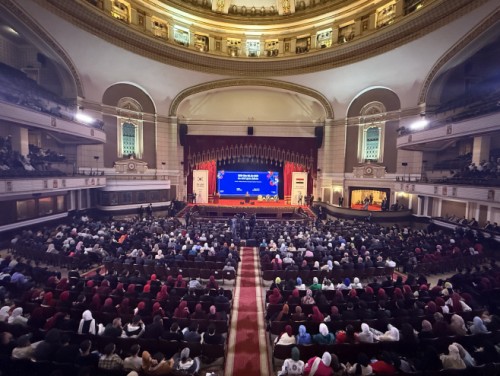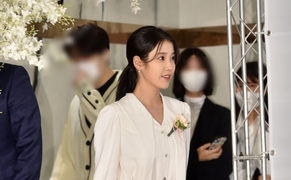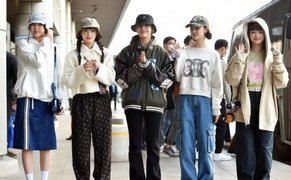 |
| President Lee Jae-myung greets attendees as he arrives at Cairo University to deliver an address on November 20 during his official visit to Egypt. / Source: Yonhap News |
During his official visit to Egypt, President Lee Jae-myung on November 20 presented the “SHINE Initiative,” a vision centered on peace, prosperity, and cultural exchange aimed at building a mutually beneficial future between the Middle East and the Korean Peninsula.
In an address at Cairo University, Lee said, “I propose the SHINE Initiative as a vision for the Middle East and the Republic of Korea to pursue together. Based on this, we will open a future of shared growth between our regions.”
The acronym SHINE combines Stability, Harmony, Innovation, Network, and Education.
Opening with the greeting “As-salamu alaykum,” Lee said Korea and the Middle East must work together through sustained engagement to build peace grounded in stability and harmony. He cited Korea’s past contributions to Middle Eastern peace efforts—including the Dongmyeong Unit’s 2007 deployment to Lebanon, Seoul’s support for a two-state solution to the Israeli–Palestinian conflict, and humanitarian assistance to conflict zones.
Marking his visit to Cairo, Lee announced a new $10 million contribution to the Egyptian Red Crescent, symbolizing Korea’s commitment to overcoming the Gaza crisis through solidarity. The Red Crescent is the Middle Eastern counterpart to the Red Cross.
Lee also reiterated that his administration aims to end the era of inter-Korean confrontation and usher in peaceful coexistence and shared growth. “We will expand inter-Korean exchanges step by step, support normalization of relations between North Korea and the international community—including the United States—and pursue denuclearization through gradual, practical measures,” he said.
Turning to economic cooperation, Lee designated Innovation as the next key pillar, promising to strengthen traditional cooperation in energy and construction while expanding into frontier areas such as artificial intelligence and hydrogen. He pledged continued efforts to bolster the institutional foundation for free trade, including the Korea–Egypt Comprehensive Economic Partnership Agreement (CEPA).
He emphasized that Korea’s rapid economic rise—known as the “Miracle on the Han River”—would not have been possible without Middle Eastern support through large construction contracts and energy imports. “Now it is time for Korea to contribute to a ‘Miracle on the Nile,’” Lee said.
Highlighting the SHINE Initiative’s Network and Education components, Lee said Korea will widen institutional support to allow more Egyptian students to study in Korea. He also expressed hopes for deeper cultural collaboration, noting the recent opening of the Grand Egyptian Museum and proposing expanded cooperation with Korea’s National Museum of Korea.
Lee concluded by addressing the students directly: “The essence of the SHINE Initiative is simple—your dreams for peace and prosperity are the future of both our nations. The future that connects the Miracle on the Han River and the Miracle on the Nile belongs to all of you here today.”
 |
| President Lee Jae-myung sits alongside Egypt’s Minister of Higher Education Yasser Refaat and Cairo University President Mohamed Othman Elkhosht before delivering his speech on November 20. / Source: Yonhap News |
 |
| Students fill the main auditorium at Cairo University on November 20 for President Lee Jae-myung’s speech titled “Shaping a Bright Future Together.” / Source: Yonhap News |
Most Read
-
1
-
2
-
3
-
4
-
5
-
6
-
7





















